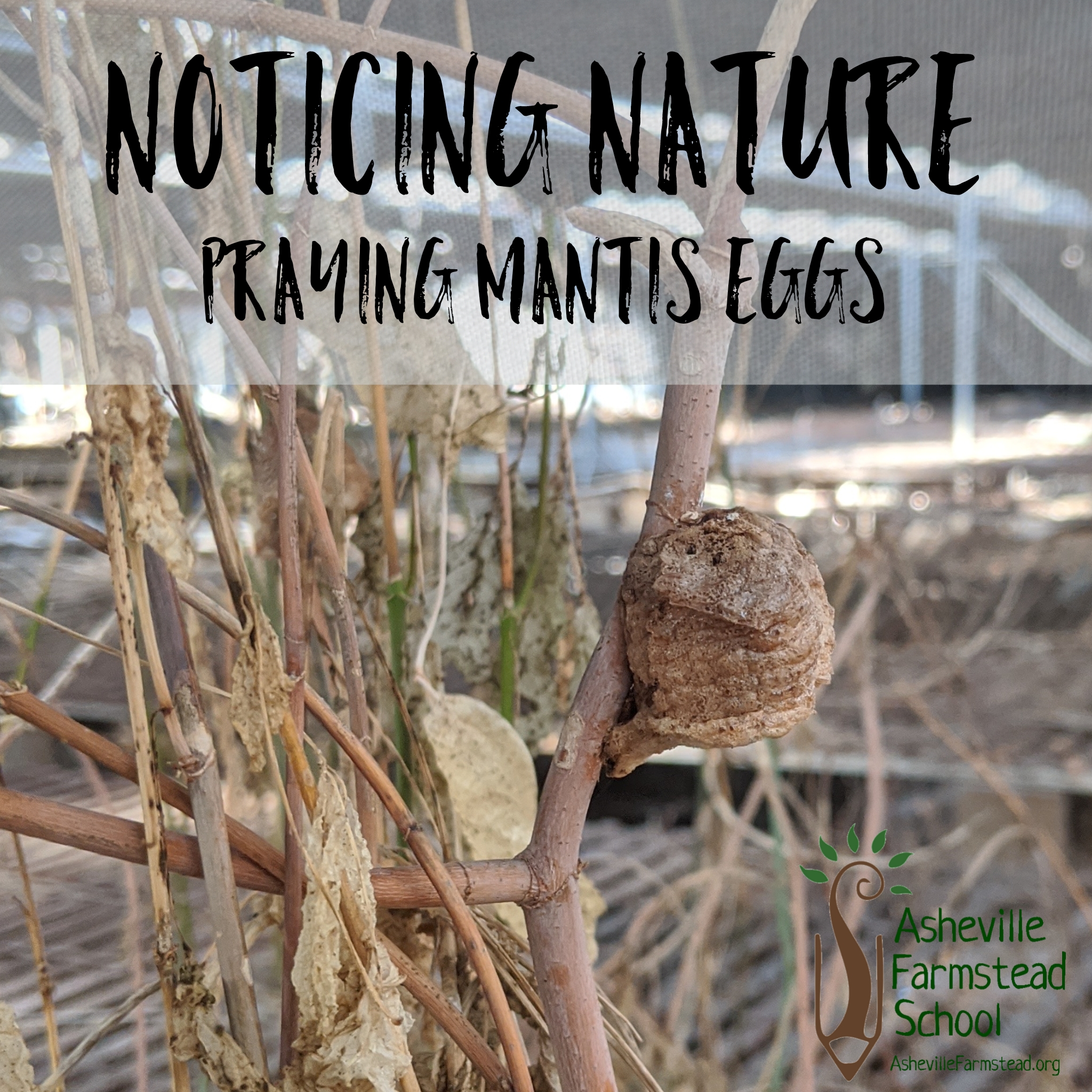NOTICING NATURE | 3 TIPS FOR FEBRUARY
During each month, nature changes, morphs, grows, and evolves all around you. In our Noticing Nature series, we introduce you to 3 things to notice while you and your kids are outside. Here are the three things to notice in nature this February.
Wineberry (Rubus phoenicolasius)
During the winter, the Wineberry plant looks like a single stem arching up to 4 feet tall. It is a deep bright red color and has sharp thorns in addition to lots of soft hairs that almost make it appear furry. Don’t cut it down! Come summer this plant will produce delicious red berries!

Praying Mantis Eggs
A female praying mantis can lay up to 300 or more eggs at a time. After she lays the eggs, she covers them with a foam substance that quickly hardens into a protective coating. This is called an ootheca, and it will protect the developing eggs throughout the winter until the weather begins to warm in the spring. At that time, the eggs will hatch and the nymphs (baby mantises) will emerge hungry and ready to eat any other insect they can find, including their siblings! For this reason, praying mantises make great garden helpers, as they help control unwanted pest insects.

Usnea
Usnea is not just one species of lichen. In fact, it is a whole genus of lichen that includes a yet-unknown number of species (scientists are still trying to figure it out!). All of the species of the genus Usnea are very sensitive to air quality and tend to die or become very scarce in areas with lots of air pollution and poor air quality. For this reason, they are considered “bioindicators”- a species whose success can reveal something about the quality of their larger environment. So if you find Usnea while you are out hiking you can breathe easy knowing that the air around you is clean and healthy!

